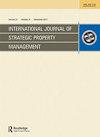组织结构与战略计划的实施:以阿联酋电信为例
IF 1.7
4区 管理学
Q3 MANAGEMENT
International Journal of Strategic Property Management
Pub Date : 2023-11-14
DOI:10.53819/81018102t5287
引用次数: 0
摘要
组织结构是指组织中角色、职责和关系的正式框架。它定义了层次结构、报告线和决策过程,这些过程塑造了工作的执行方式和目标的实现方式。有效的组织结构对于战略计划的成功实施至关重要,因为它确保了有效的协调、资源分配和努力的一致性。战略计划的实施涉及将战略目标转化为可操作的步骤和举措。它需要明确的沟通、有效的领导和资源的调动。实施包括设置优先级、分配责任和建立绩效度量来跟踪实现战略目标的进展。良好定义的组织结构为执行这些任务提供了框架,并使组织能够以协调和有效的方式响应挑战和机遇。研究结果表明,阿联酋电信已经努力使其分层组织结构与其战略目标保持一致。权力和责任的明确界限促进了战略倡议的有效决策和资源分配。定期评估允许组织识别改进的领域,做出必要的调整,并确保战略一致性。该研究的结论是,组织结构促进了跨职能的协作和协调,促进了创新服务和基础设施项目的实施。公司已有效地将其战略目标传达给利益相关者,从而形成合作伙伴关系、监管支持和客户满意度。该研究建议,阿联酋电信应注重在其分层组织结构中培养灵活性和适应性,这可以通过实施敏捷方法和创建能够快速响应市场变化和新趋势的跨职能团队来实现。阿联酋电信应加强其绩效监测和评价机制,以确保战略计划得到有效执行。关键词:组织结构,实施,战略计划,阿联酋本文章由计算机程序翻译,如有差异,请以英文原文为准。
Organizational Structure and Implementation of Strategic Plans: A Case Study of Etisalat in UAE
Organizational structure refers to the formal framework of roles, responsibilities, and relationships within an organization. It defines the hierarchy, reporting lines, and decision-making processes that shape how work is carried out and how goals are achieved. An effective organizational structure is crucial for the successful implementation of strategic plans as it ensures efficient coordination, resource allocation, and alignment of efforts. The implementation of strategic plans involves translating strategic objectives into actionable steps and initiatives. It requires clear communication, effective leadership, and the mobilization of resources. Implementation involves setting priorities, assigning responsibilities, and establishing performance measures to track progress towards strategic goals. A well-defined organizational structure provides the framework for executing these tasks and enables the organization to respond to challenges and opportunities in a coordinated and efficient manner. The research findings indicate that Etisalat has made efforts to align its hierarchical organizational structure with its strategic goals. The clear lines of authority and accountability have facilitated efficient decision-making and resource allocation for strategic initiatives. Regular evaluations allow the organization to identify areas of improvement, make necessary adjustments, and ensure strategic alignment. The study concluded that organizational structure has enabled cross-functional collaboration and coordination, facilitating the implementation of innovative services and infrastructure projects. The company has effectively communicated its strategic objectives to stakeholders, resulting in partnerships, regulatory support, and customer satisfaction. The study recommended that Etisalat should focus on fostering flexibility and adaptability within its hierarchical organizational structure which can be achieved by implementing agile methodologies and creating cross-functional teams that can respond quickly to market changes and emerging trends. Etisalat should strengthen its performance monitoring and evaluation mechanisms to ensure the effective implementation of strategic plans. Keywords: Organizational Structure, Implementation, Strategic Plans, UAE
求助全文
通过发布文献求助,成功后即可免费获取论文全文。
去求助
来源期刊
CiteScore
4.00
自引率
18.50%
发文量
23
审稿时长
15 weeks
期刊介绍:
International Journal of Strategic Property Management is a peer-reviewed, interdisciplinary journal which publishes original research papers. The journal provides a forum for discussion and debate relating to all areas of strategic property management. Topics include, but are not limited to, the following: asset management, facilities management, property policy, budgeting and financial controls, enhancing residential property value, marketing and leasing, risk management, real estate valuation and investment, innovations in residential management, housing finance, sustainability and housing development, applications, etc.

 求助内容:
求助内容: 应助结果提醒方式:
应助结果提醒方式:


